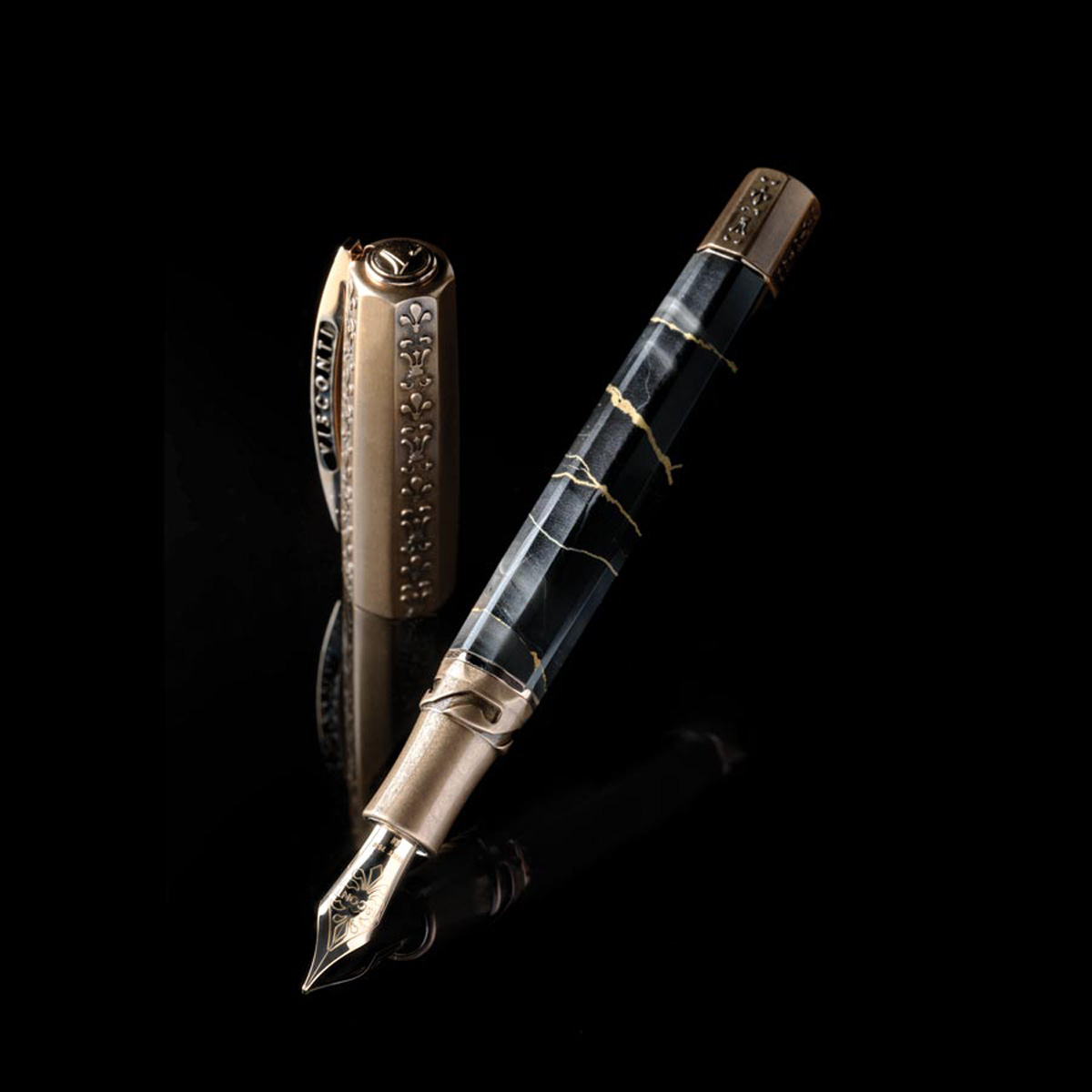
VISCONTI
Visconti writing instruments are made by master craftsmen using both traditional and modern techniques. Not only are they high performing tools, but also beautiful works of art. Visconti uses different kind of techniques to make pens which are the following:
1. SCRIMSHAW TECHNIQUE
Scrimshaw, which was originally used to create refined incisions on small objects, is now used to shape bodies and caps of prestigious fountain pens.
2. SKELETON TECHNIQUE:
For this technique, a metal structure is wrapped around the pen’s body or cap. The spaces between these metal inlays are filled with different materials. This unique contrast gives a pleasing tactile feeling and a 3-dimensional effect to the writing instrument.
3. CELLULOID:
Celluloid is an elastic and unbreakable material that is shock-resistant and waterproof. Celluloid fountain pens are hypoallergenic, partly absorb hand moisture, and are some of the most resistants on the market.
4. MAKI-E TECHNIQUE:
Hand painting, or more specifically the Japanese lacquering technique Maki-e, has characterised many of Visconti’s most creative and original pens. These limited editions are made in collaboration with artists from all over the world.
5. EBONITE:
Ebonite, invented by Charles Goodyear, is a resistant material made through the process of vulcanization of natural rubber with a high sulphur content and the addition of mineral and organic substances.
6. THE FILIGREE TECHNIQUE:
Threads of different dimensions, made through the fusion of gold and silver, are twisted and soldered to a surface. Once the decoration is ready, it is wrapped around a cylindrical support to give it shape and perfectly adapt it to the writing instrument which takes over 30 hours to complete a single sheet.
7. LOST WAX CASTING TECHNIQUE:
This technique, mostly employed in the creation of jewels, is used for jewel-pens such as the Casa Batlló model. A plaster cast, which includes little openings, is molded around a wax model of the pen. The plaster is left to harden before the mold is exposed to high temperatures which cause the wax to melt and clear out. The empty space is then filled with liquid metal. Once the mold has cooled down enough, the plaster cast is broken away and the inside is freed. The metal positive is polished and reworked to transform it into a unique and precious writing instrument.
8. MARBLE:
Tuscan marbles are some of the finest in the world and immediately evoke the glory of the Renaissance period. Both the Lorenzo Il Magnifico pen and the Visconti San Miniato collection give full expression to this exquisite material.
9. AIRBRUSHING:
In this technique, colour is spread over the pen’s body with an airbrush. In a second phase, motifs or illustrations is added using the same method. This modern and bright technique relies on the artist’s skill and high level of precision.
10. STEEL, TITANIUM, AND CARBON:
Stainless steel, titanium, and now carbon are not only extremely resistant but also bring a unique and modern touch to our pens.
Apart from the above, Visconti are the first company in the world to introduce the use of LAVA on pen. Lava dust, an ancient material made from volcanic rock, is shatterproof and smooth to the touch, two qualities that make it perfect for the creation of writing instruments.
 9073661766
9073661766



